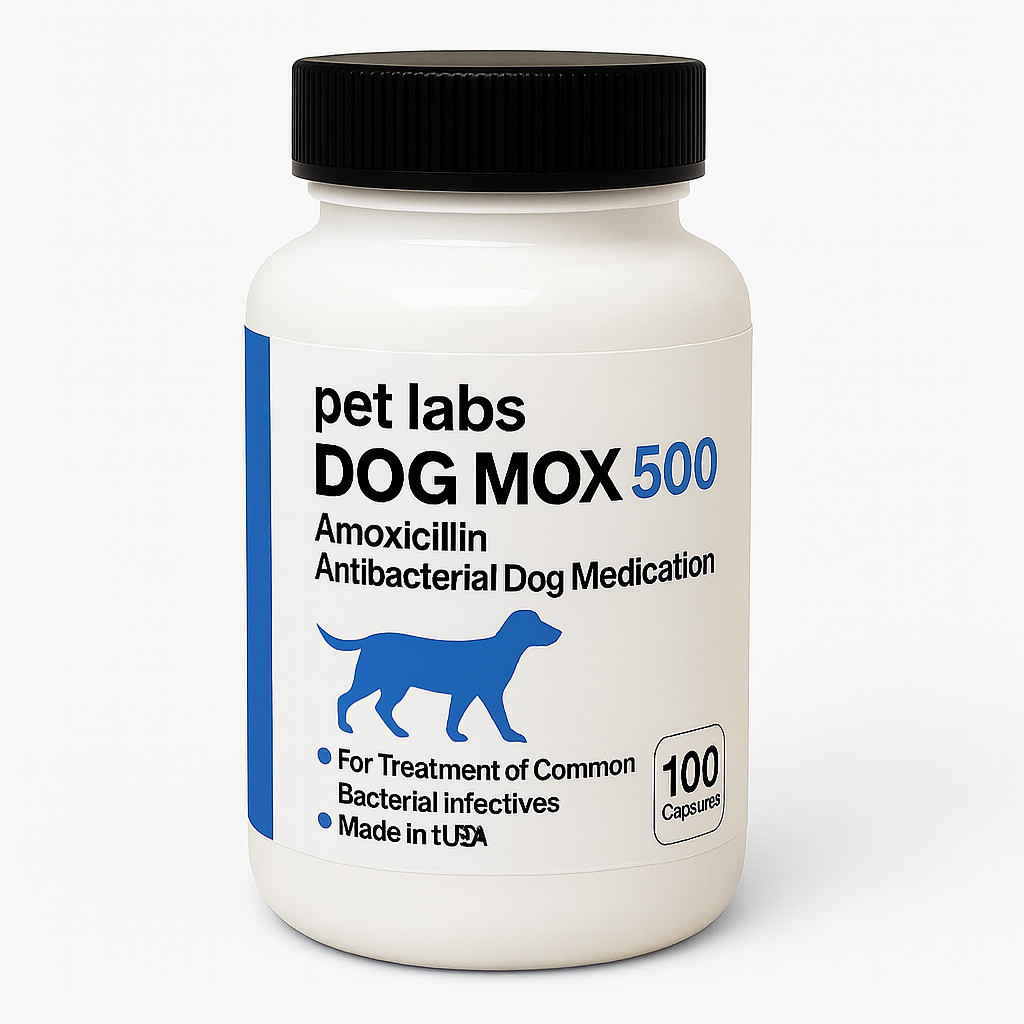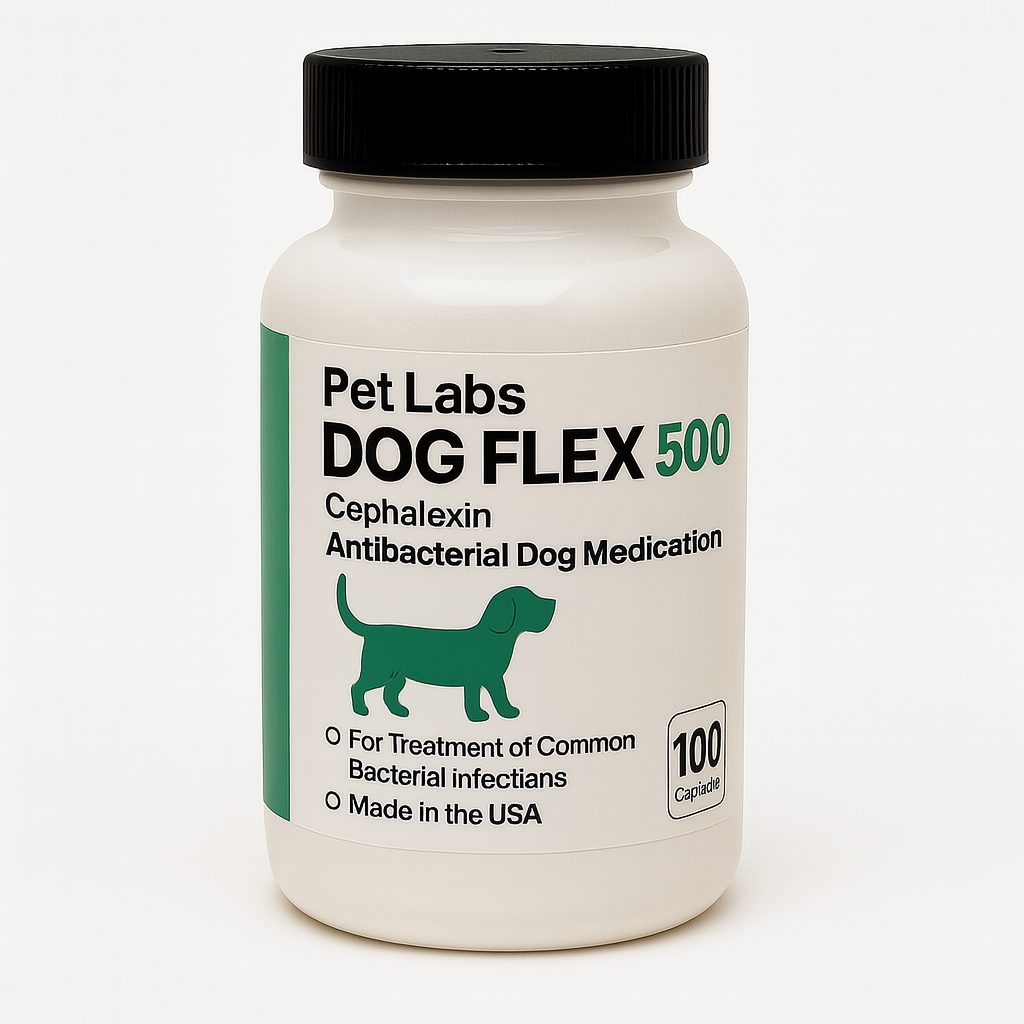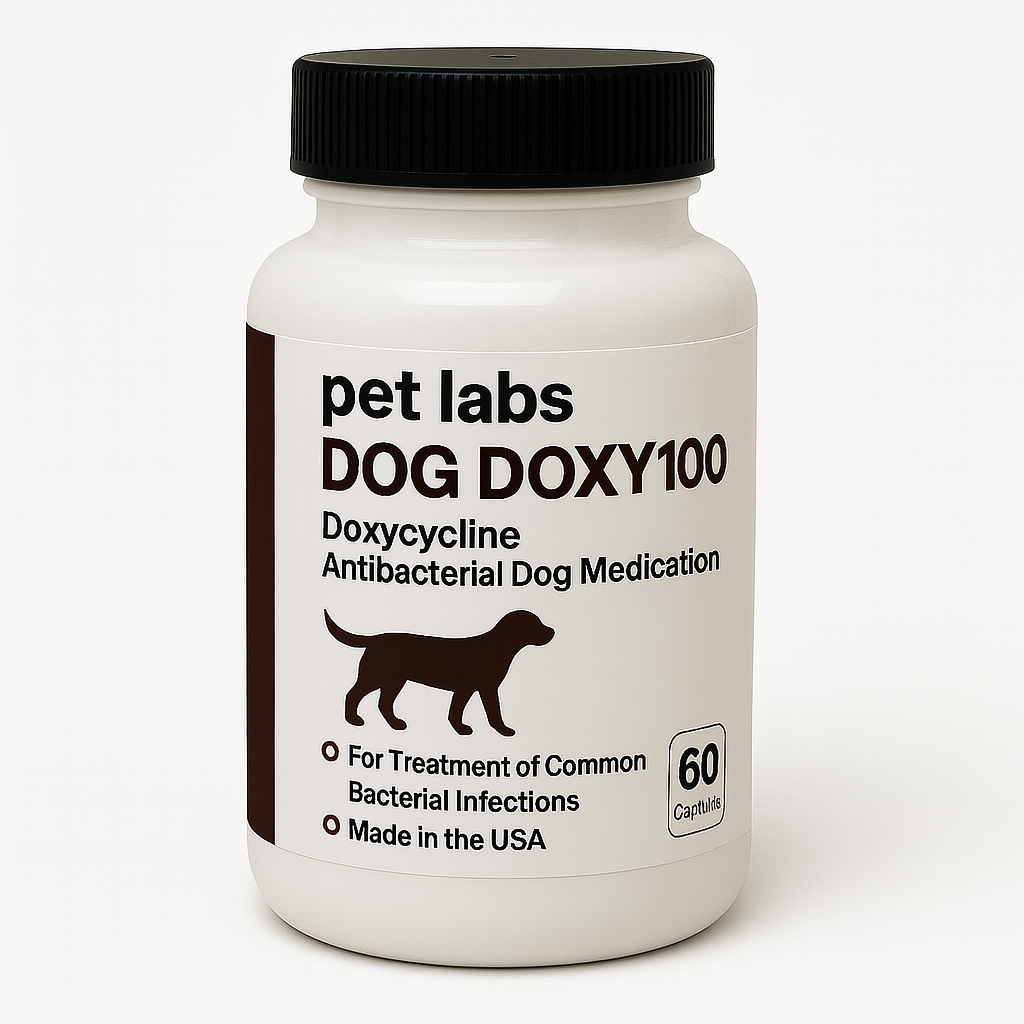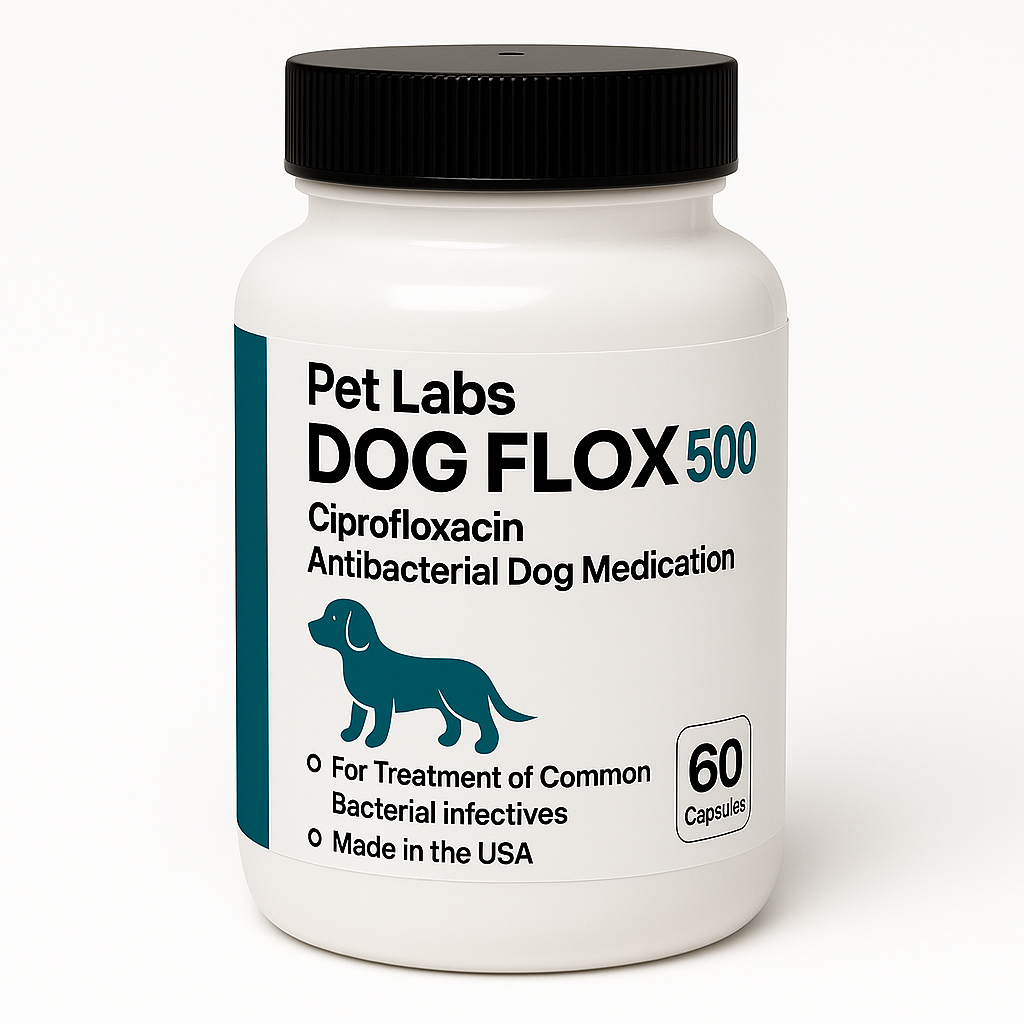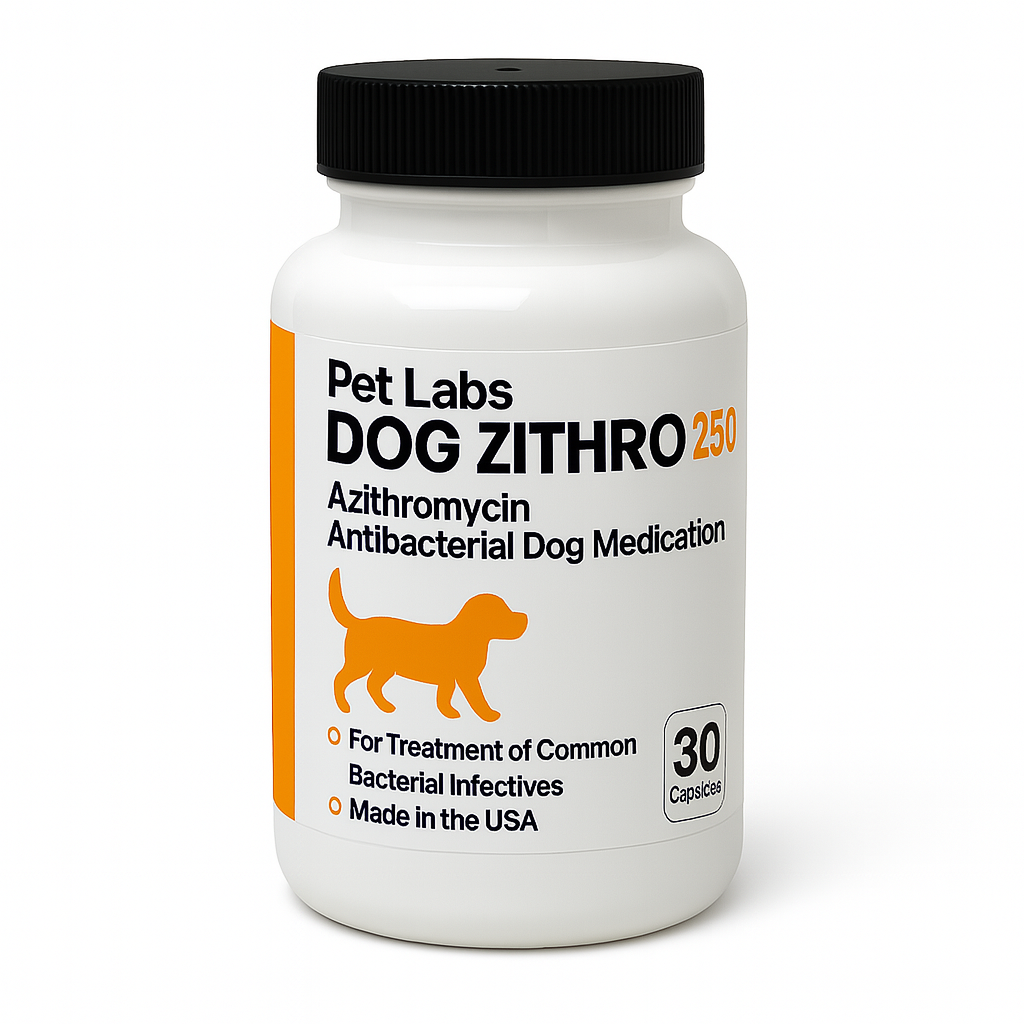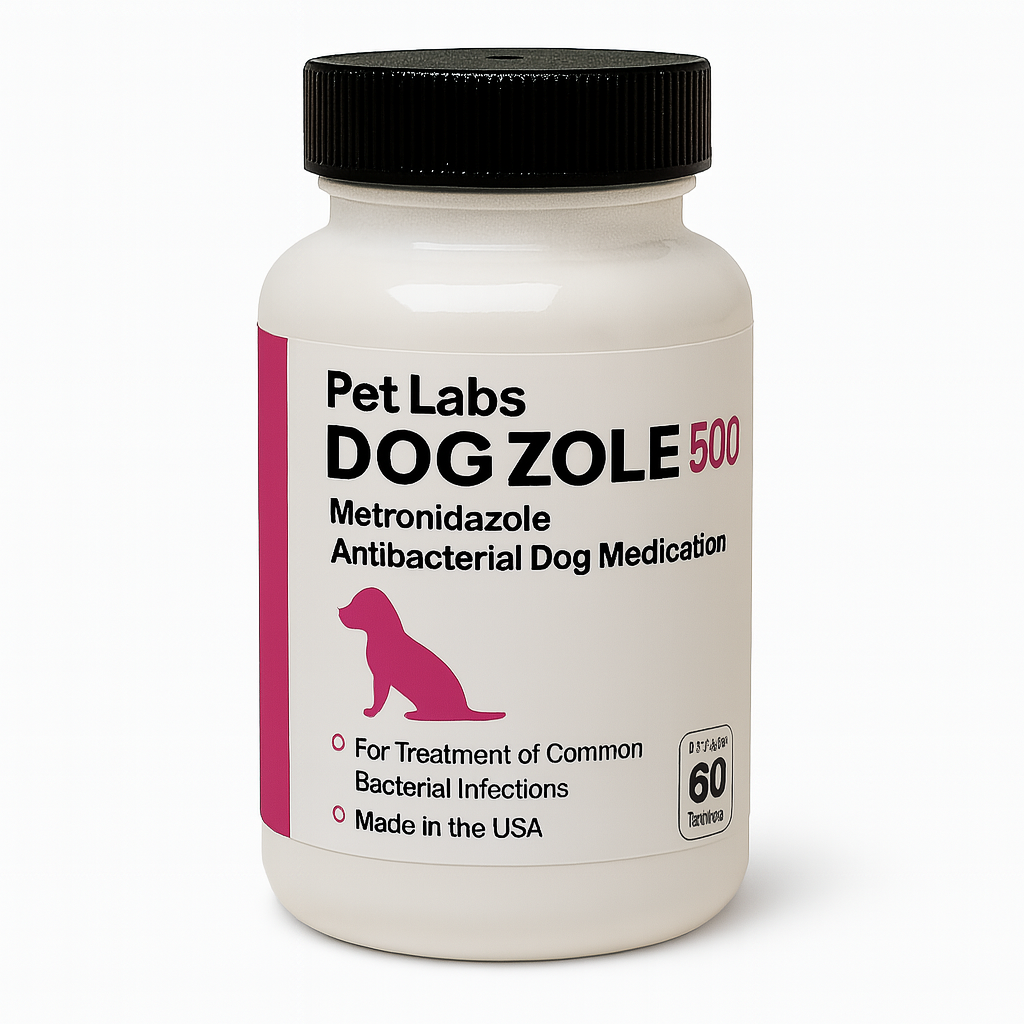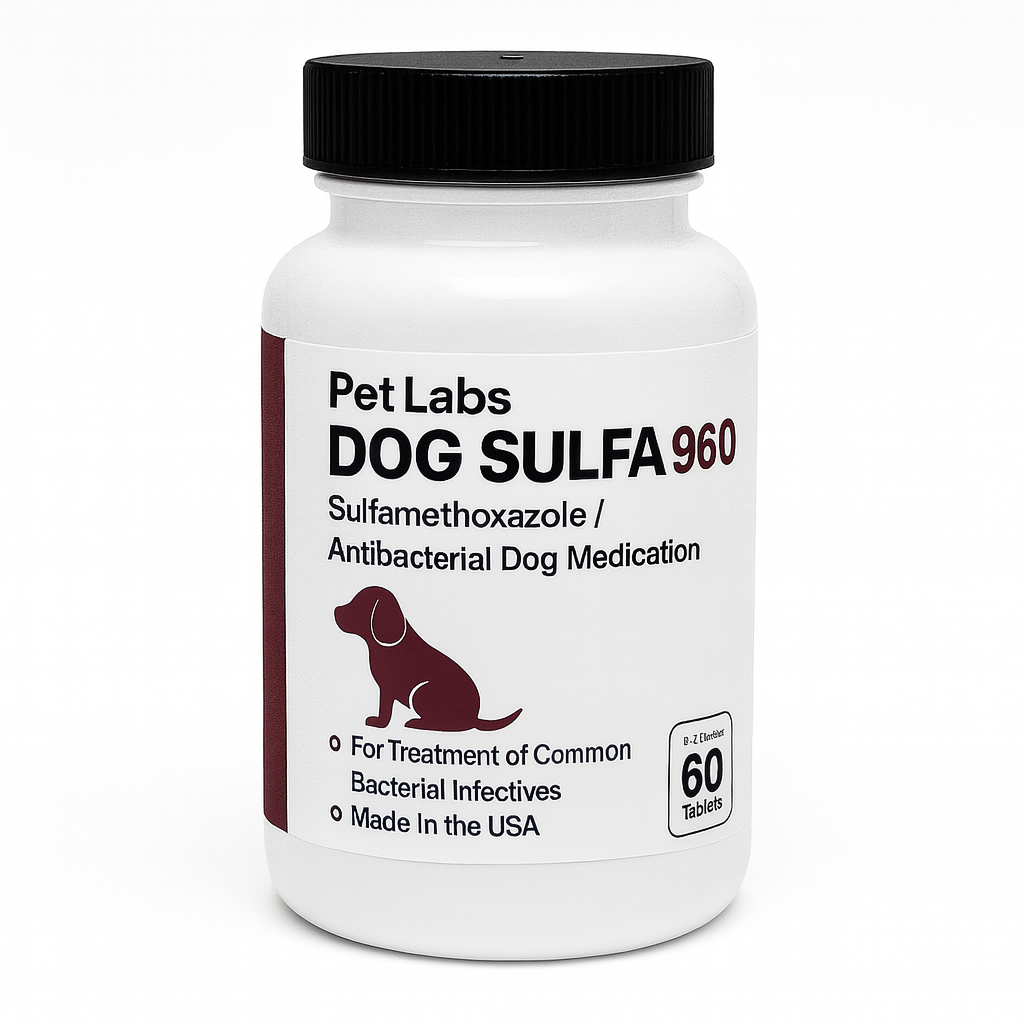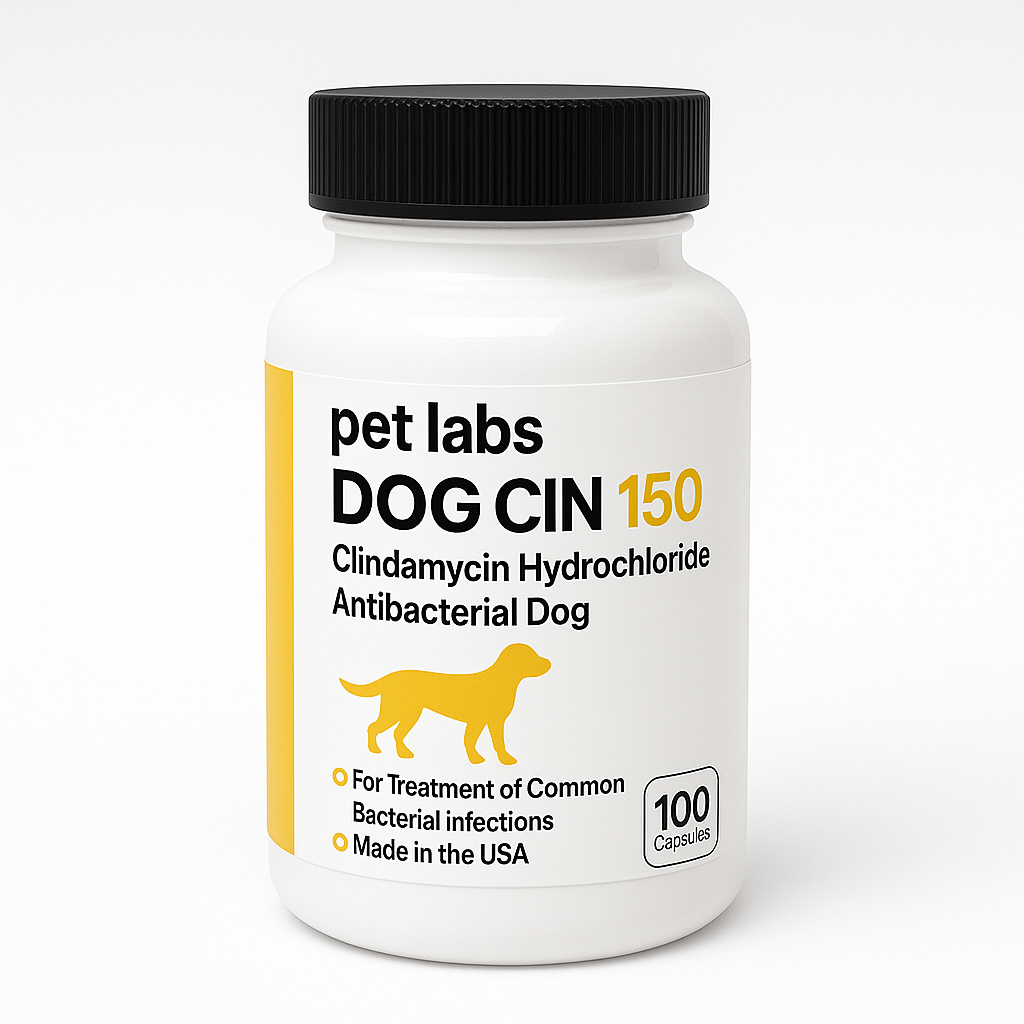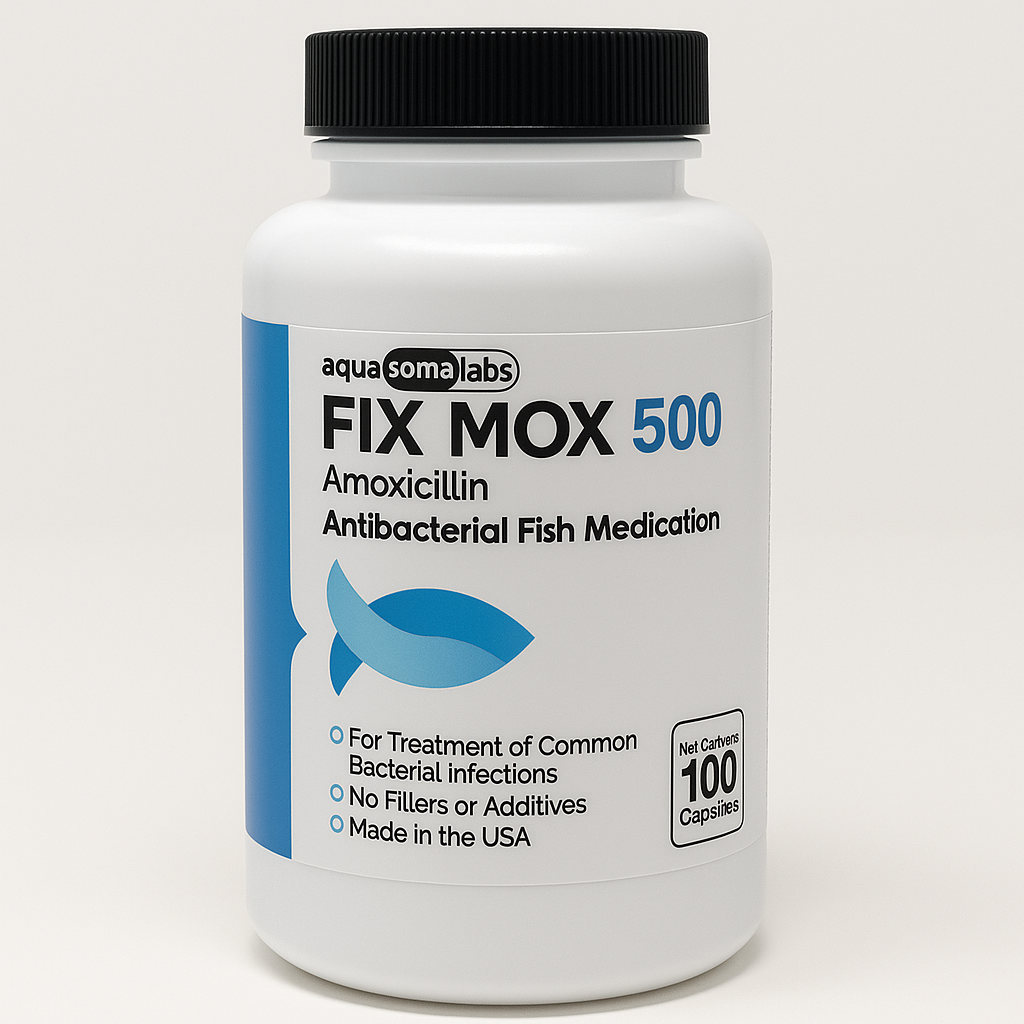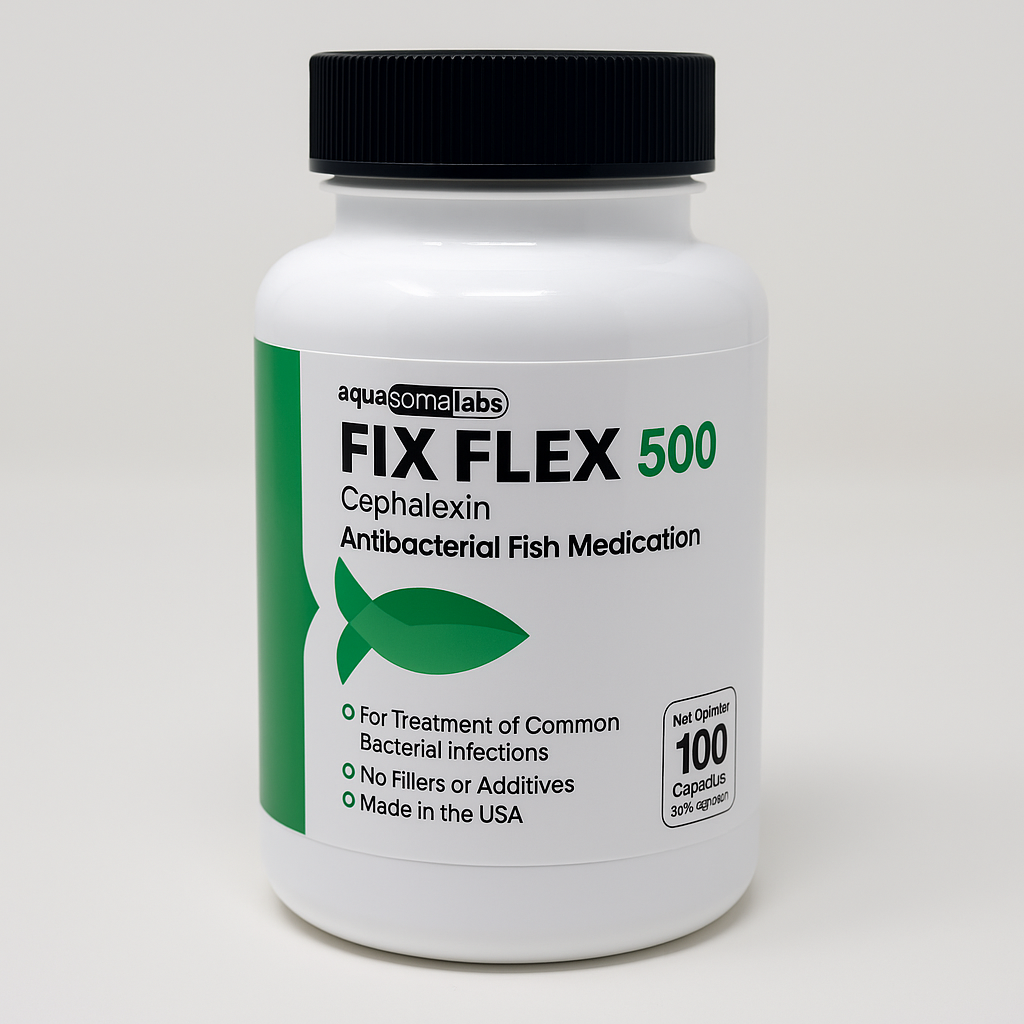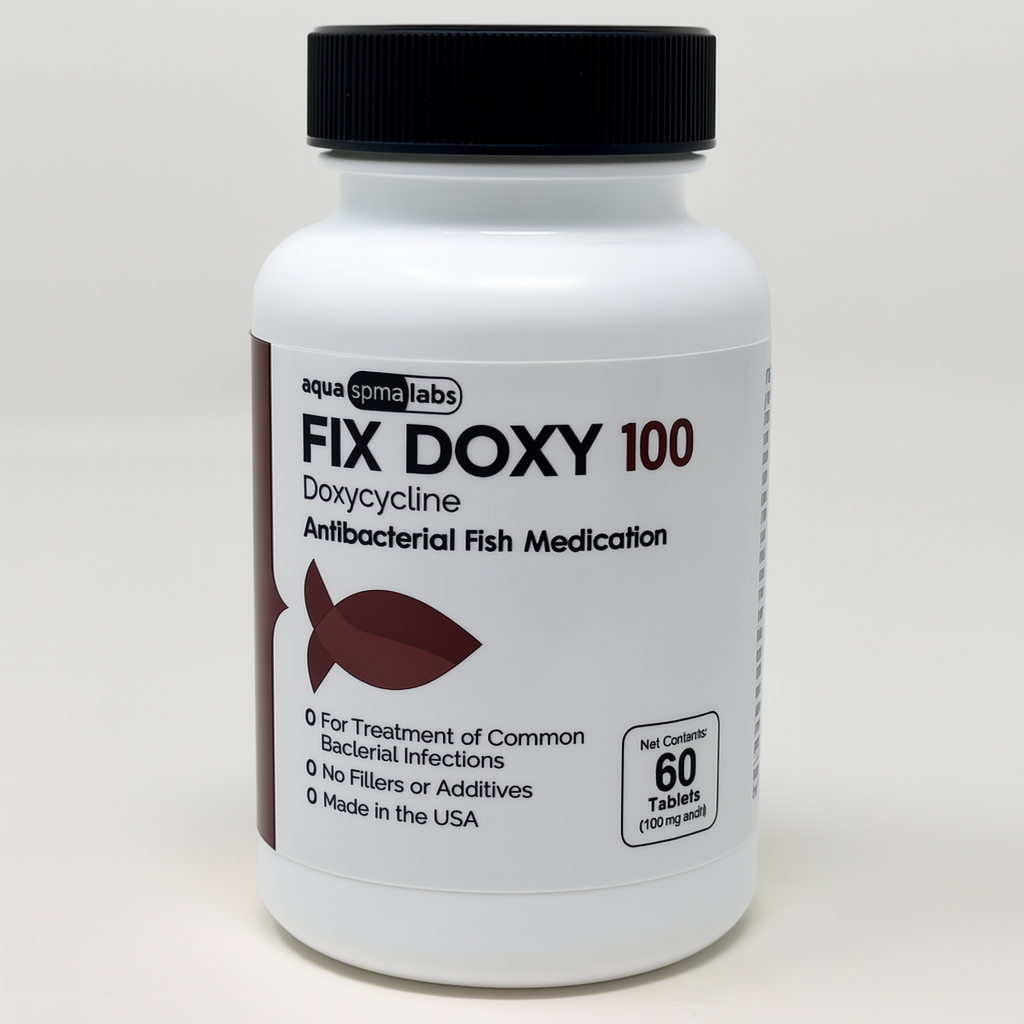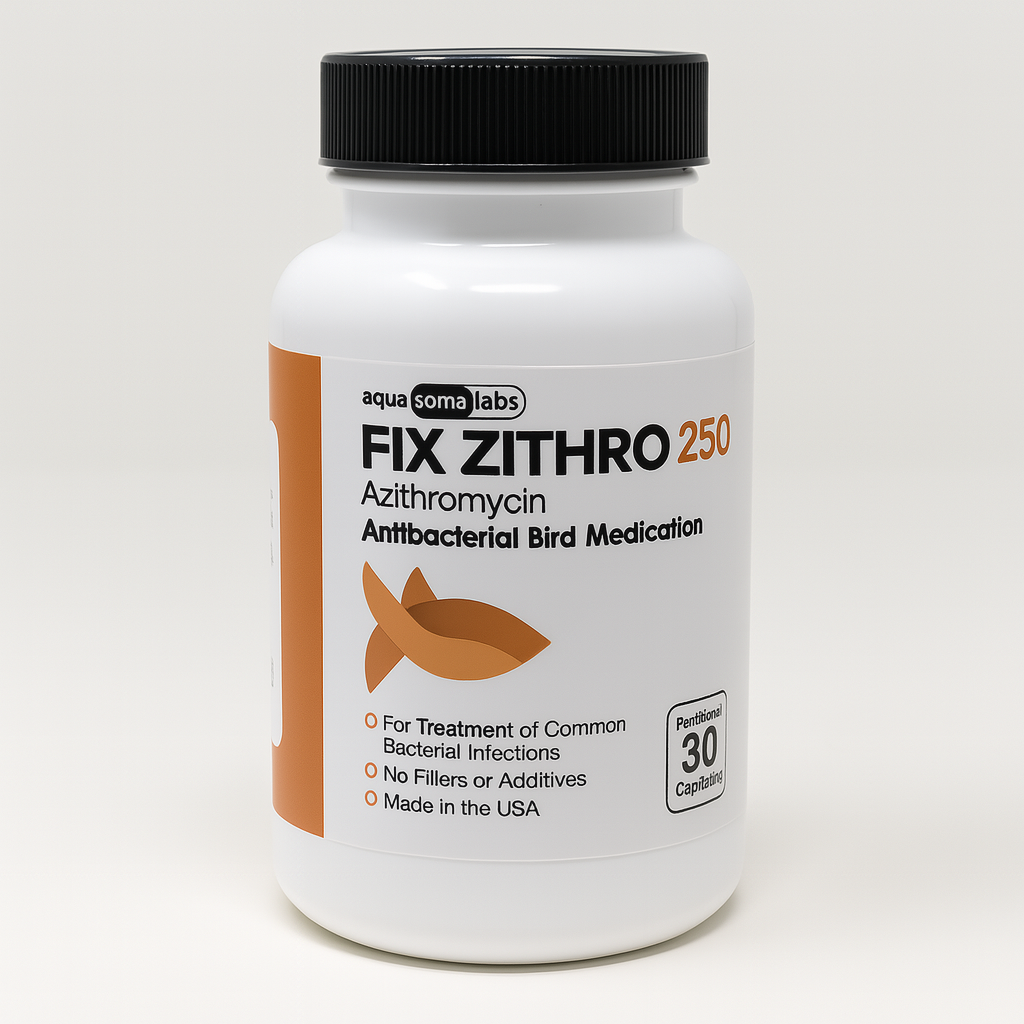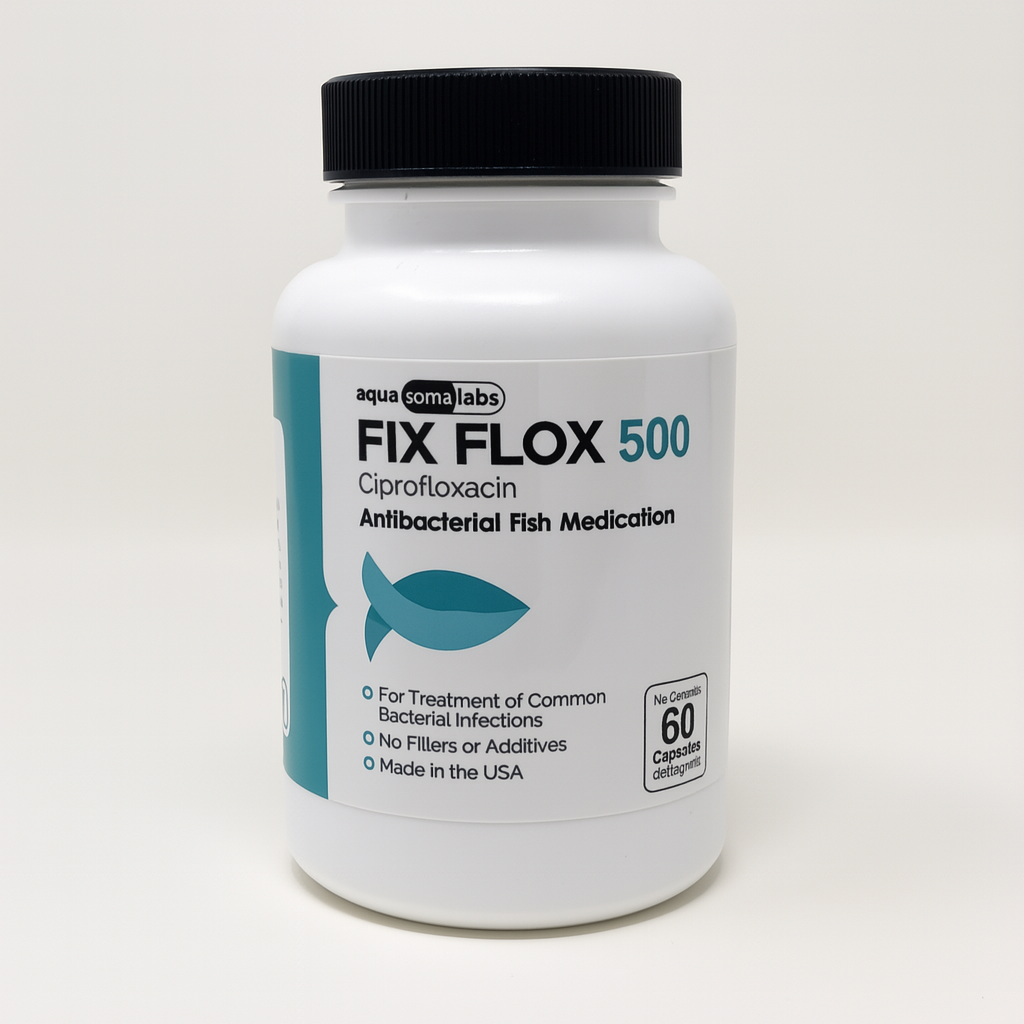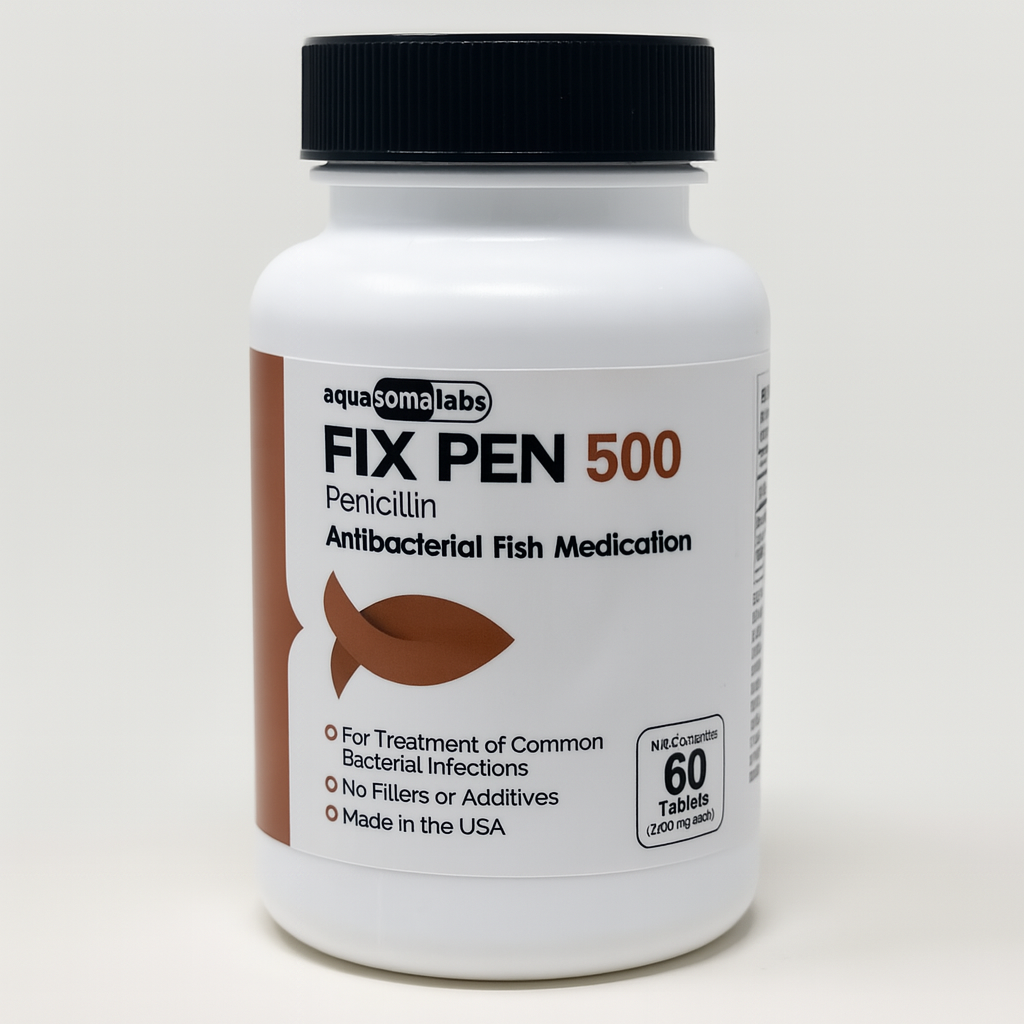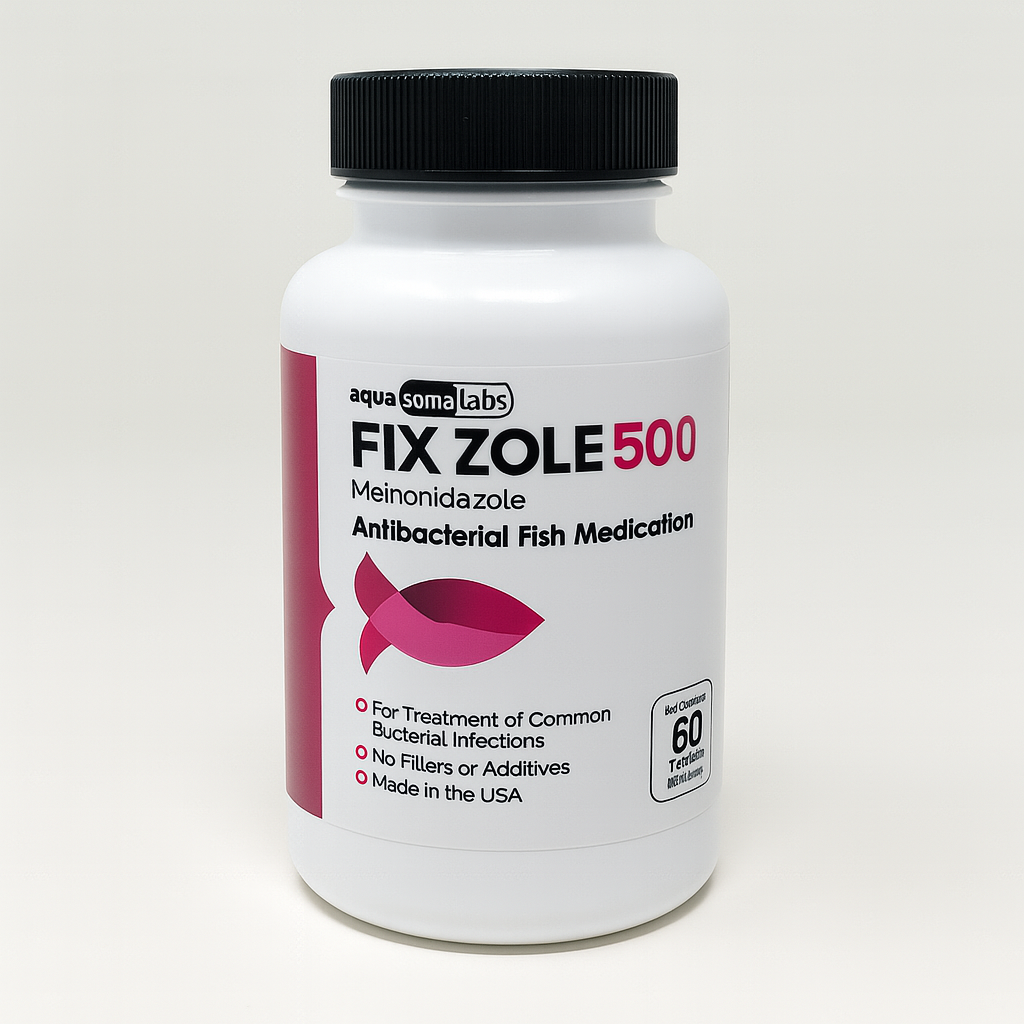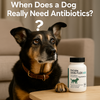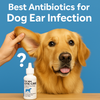Best Antibiotics for Dog Ear Infection: Safe No‑Rx Options That Work Fast
Best Antibiotics for Dog Ear Infection
Ear infections are one of the most common health issues in dogs, causing discomfort, head shaking, scratching, and sometimes even hearing loss if left untreated. While mild cases may respond to cleaning and home care, many ear infections require antibiotic treatment to clear up the infection and prevent it from spreading deeper into the ear canal.
Choosing the best antibiotic for your dog's ear infection depends on the type of bacteria involved, the severity of the infection, and whether it's an acute or recurring problem. In this guide, we’ll explain:
- How to recognize the signs of a dog ear infection
- Common causes of bacterial ear infections in dogs
- The most effective oral and topical antibiotics for ear infections
- Safe dosage guidelines for popular antibiotics
- Where to buy trusted, no-prescription dog antibiotics online
All of the antibiotics featured in this article are available from DogsAntibiotics.com — a trusted source for no-Rx antibiotics shipped directly to your door in the USA.
Signs & Symptoms of Ear Infections in Dogs
Recognizing the early signs of a dog ear infection is crucial for fast and effective treatment. The sooner you identify the problem, the less likely it will progress to a severe or chronic infection that requires longer antibiotic courses.
Common Symptoms of a Dog Ear Infection
- Head Shaking: Frequent shaking of the head to relieve irritation
- Scratching at the Ear: Persistent pawing or scratching at one or both ears
- Odor from the Ear: A strong, unpleasant smell coming from the ear canal
- Redness & Swelling: Inflamed skin inside the ear flap or ear canal
- Discharge: Yellow, brown, or bloody fluid coming from the ear
- Pain or Sensitivity: Discomfort when the ear is touched
- Balance Problems: Loss of coordination or tilting the head to one side
When to Seek Antibiotic Treatment
If your dog shows any combination of these symptoms, especially if there’s discharge, swelling, or pain, it’s likely a bacterial infection is present. In these cases, antibiotics are often necessary to clear the infection and prevent it from spreading to the middle or inner ear.
For quick relief and targeted treatment, you can order safe, veterinary-labeled antibiotics such as: Dog Amoxicillin 500mg or Dog Cephalexin 500mg without a prescription.
Common Causes of Dog Ear Infections
Understanding what causes a dog ear infection helps you choose the right antibiotic and prevent future flare-ups. While some ear infections are triggered by yeast or allergies, bacterial infections are the most common reason antibiotics are needed.
Primary Causes of Bacterial Ear Infections in Dogs
- Bacteria: Overgrowth of harmful bacteria such as Staphylococcus, Pseudomonas, or E. coli inside the ear canal
- Moisture & Poor Airflow: Dogs with floppy ears (e.g., Cocker Spaniels, Basset Hounds) trap moisture, creating a breeding ground for bacteria
- Ear Mites: Can cause irritation and scratching, leading to secondary bacterial infection
- Allergies: Food or environmental allergies weaken the skin’s natural defenses and allow bacteria to invade
- Foreign Bodies: Grass seeds, dirt, or debris inside the ear can cause irritation and infection
- Underlying Skin Conditions: Chronic skin inflammation can spread into the ears
Why Some Dogs Get Ear Infections Repeatedly
Certain breeds are naturally more prone to ear infections due to ear shape and anatomy. Dogs with a history of allergies, chronic skin problems, or previous untreated infections may also suffer from recurring bacterial ear infections.
If your dog experiences ear infections frequently, it’s important to treat the infection completely with antibiotics and address the root cause to prevent recurrence.
You can order reliable, no-prescription antibiotics such as: Dog Cephalexin 500mg or Dog Amoxicillin 500mg online from DogsAntibiotics.com.
Why Antibiotics Are Needed for Dog Ear Infections
While some mild dog ear infections may improve with cleaning and topical treatments, many require oral antibiotics to fully eliminate the bacteria causing the problem. Left untreated, bacterial ear infections can worsen, spread deeper into the ear canal, and even cause permanent hearing loss.
When Are Antibiotics Necessary?
- Persistent Symptoms: Infection does not improve after a few days of cleaning and topical care
- Severe Discharge: Yellow, green, or bloody fluid coming from the ear
- Significant Redness & Swelling: Inflamed ear canal indicating deeper infection
- Recurring Infections: Multiple infections within a short period of time
- Middle or Inner Ear Involvement: Symptoms such as head tilting, loss of balance, or pain when chewing
Why Oral Antibiotics Are Often More Effective
Topical antibiotic ear drops can work for surface-level infections, but oral antibiotics are more effective for moderate to severe cases because they circulate through the bloodstream and target bacteria throughout the entire ear canal, including deeper layers.
Commonly used oral antibiotics for bacterial ear infections include: Amoxicillin, Cephalexin, and Ciprofloxacin.
The Goal of Antibiotic Treatment
The main purpose of antibiotics is to:
- Kill the bacteria causing the infection
- Reduce inflammation and pain
- Prevent the infection from spreading deeper
- Stop recurrence by fully eliminating the bacteria
Best Oral Antibiotics for Dog Ear Infections
When a dog ear infection is bacterial in nature and moderate to severe, oral antibiotics are often the most effective treatment. They target the bacteria from within the body, ensuring the infection is cleared completely. Below are the most trusted oral antibiotics for treating dog ear infections.
1. Amoxicillin
Best for: General bacterial ear infections caused by Staphylococcus or Streptococcus species.
Amoxicillin is a widely used penicillin-class antibiotic that works by disrupting bacterial cell wall formation. It’s well-tolerated, safe, and effective for most mild to moderate ear infections.
Buy Online: Dog Amoxicillin 500mg – 100 Capsules | Dog Amoxicillin 250mg – 100 Capsules
2. Cephalexin
Best for: Chronic or recurring bacterial ear infections, especially related to skin conditions.
Cephalexin is a cephalosporin antibiotic effective against gram-positive bacteria. It’s a good choice for dogs with recurring infections caused by resistant strains.
Buy Online: Dog Cephalexin 500mg – 100 Capsules | Dog Cephalexin 250mg – 100 Capsules
3. Ciprofloxacin
Best for: Resistant bacterial ear infections, including Pseudomonas species.
Ciprofloxacin is a fluoroquinolone antibiotic used when first-line treatments fail. It penetrates deeply and is especially effective for complicated infections.
Buy Online: Dog Ciprofloxacin 500mg – 60 Capsules | Dog Ciprofloxacin 500mg – 30 Capsules
4. Clindamycin
Best for: Deep tissue ear infections and anaerobic bacterial infections.
Clindamycin is highly effective for infections involving deeper tissues or those accompanied by dental or wound infections. It’s a lincosamide antibiotic that stops bacteria from producing essential proteins.
Buy Online: Dog Clindamycin 150mg – 100 Capsules
Best Topical Antibiotics for Dog Ear Infections
In addition to oral antibiotics, topical antibiotic ear drops are an effective way to directly target bacteria in your dog’s ear canal. They work locally to reduce bacterial growth, relieve inflammation, and improve comfort while oral antibiotics treat the infection internally.
When Topical Antibiotics Are Used
- Mild to Moderate Infections: Especially those confined to the outer ear canal
- As an Add-On: Used alongside oral antibiotics for severe infections
- Post-Cleaning Treatment: Helps prevent bacteria from returning after ear cleaning
Common Veterinary-Prescribed Topical Antibiotics
- Gentamicin: Broad-spectrum antibiotic that treats most bacterial ear infections
- Enrofloxacin: Effective against resistant bacteria, including Pseudomonas
- Neomycin: Commonly included in combination ear drops for bacterial control
- Polymyxin B: Works well against gram-negative bacteria
Why Topical Antibiotics Are Not Always Enough
While topical treatments can clear superficial infections, they may not reach deeper tissue if the infection has progressed. In these cases, pairing a topical antibiotic with an oral antibiotic such as Amoxicillin or Cephalexin provides a more complete treatment.
Tip: Always clean your dog’s ears before applying topical antibiotics to ensure maximum absorption and effectiveness.
How to Choose the Right Antibiotic for Your Dog’s Ear Infection
Selecting the right antibiotic depends on several factors, including the type of bacteria involved, the severity of the infection, your dog’s medical history, and whether the infection is recurring. Using the wrong antibiotic can delay recovery and make the infection harder to treat.
Key Factors to Consider
- Type of Infection: Bacterial ear infections require antibiotics, while yeast infections need antifungal treatments.
- Severity: Mild cases may respond to topical drops, but moderate to severe infections often need oral antibiotics.
- Dog’s Size & Weight: Correct dosage depends on body weight to avoid under- or overdosing.
- Allergies & Sensitivities: Some dogs may react to specific antibiotics; choose alternatives if needed.
- Recurrence: Chronic infections may require stronger or longer treatment plans.
Recommended First-Line Oral Antibiotics
- Dog Amoxicillin 500mg – 100 Capsules : A trusted first-line antibiotic for most bacterial ear infections.
- Dog Cephalexin 500mg – 100 Capsules : Excellent for recurring or skin-related bacterial ear infections.
When to Consider Stronger Antibiotics
If your dog’s infection does not improve within 3–5 days of starting treatment, or if symptoms worsen, your dog may need a stronger antibiotic such as: Ciprofloxacin or Clindamycin.
Tip: Always complete the full antibiotic course, even if your dog seems better. Stopping early can lead to recurrence and antibiotic resistance.
Dosage Guidelines for Oral Antibiotics for Dog Ear Infections
Correct dosing is critical to ensure your dog’s ear infection is treated effectively while avoiding side effects. Dosage depends on the specific antibiotic, your dog’s weight, and the severity of the infection. Below is a general guide for commonly used oral antibiotics in dogs.
General Dosage Guidelines
| Antibiotic | Dosage Range | Frequency |
|---|---|---|
| Amoxicillin | 5–10 mg per lb (10–20 mg/kg) | Every 12 hours |
| Cephalexin | 10–15 mg per lb (22–30 mg/kg) | Every 8–12 hours |
| Ciprofloxacin | 5–15 mg per kg (2.3–6.8 mg/lb) | Every 24 hours |
| Clindamycin | 5.5 mg per lb (11 mg/kg) | Every 12 hours |
Important Dosing Tips
- Always round doses down slightly to avoid overdosing.
- Give antibiotics with food to reduce stomach upset.
- Space doses evenly to maintain consistent antibiotic levels in the body.
- Never stop treatment early — complete the full course even if symptoms improve.
Recommended No-Rx Antibiotics You Can Order Online
- Dog Amoxicillin 500mg – 100 Capsules
- Dog Cephalexin 500mg – 100 Capsules
- Dog Ciprofloxacin 500mg – 60 Capsules
- Dog Clindamycin 150mg – 100 Capsules
Note: These are general veterinary guidelines. For precise dosing and treatment duration, consult your veterinarian — especially for puppies, senior dogs, or dogs with pre-existing health conditions.
Side Effects & Safety Tips for Dog Ear Infection Antibiotics
While antibiotics are generally safe for treating dog ear infections, they can cause side effects in some dogs — especially if dosed incorrectly or used for extended periods. Knowing what to watch for ensures your dog’s treatment is both effective and safe.
Common Side Effects
- Digestive Upset: Mild nausea, vomiting, or diarrhea, particularly if antibiotics are taken on an empty stomach
- Loss of Appetite: Temporary decrease in interest in food
- Lethargy: Mild drowsiness or decreased activity levels
- Drooling: Due to the bitter taste of certain antibiotics
Serious Side Effects (Seek Veterinary Help Immediately)
- Allergic Reaction: Facial swelling, hives, difficulty breathing
- Severe Diarrhea: May indicate imbalance of gut bacteria or antibiotic-associated colitis
- Neurological Symptoms: Disorientation, tremors, or seizures (rare)
Safety Tips for Antibiotic Use
- Always give antibiotics with food to reduce stomach irritation
- Ensure your dog drinks plenty of water during treatment
- Follow the correct dosage based on your dog’s weight
- Do not stop treatment early, even if symptoms improve
- Never use leftover human antibiotics without veterinary guidance
Probiotics Can Help
Because antibiotics kill both harmful and beneficial bacteria, giving your dog a probiotic supplement can help restore gut balance and reduce digestive side effects. Administer probiotics a few hours after each antibiotic dose for best results.
Order Trusted No-Rx Antibiotics for Dogs
Where to Buy Trusted Dog Ear Infection Antibiotics Online
When your dog needs antibiotics for an ear infection, getting safe, veterinary-grade products from a trusted source is essential. While many pet owners still rely on their veterinarian for prescriptions, you can now buy dog antibiotics online without a vet prescription from reputable suppliers.
Why Buy Online?
- Convenience: Order from home and have antibiotics delivered directly to your door
- Fast Shipping: Receive your order in just a few days
- Lower Cost: Avoid expensive vet appointment fees
- No Prescription Needed: Purchase legally-labeled veterinary antibiotics without a vet script
Trusted Source: DogsAntibiotics.com
DogsAntibiotics.com is a leading online supplier of veterinary-labeled antibiotics for dogs. All products are clearly marked for pet use, properly packaged, and shipped promptly from within the USA.
Recommended Antibiotics for Dog Ear Infections
- Dog Amoxicillin 500mg – 100 Capsules – A first-line antibiotic for most bacterial ear infections
- Dog Cephalexin 500mg – 100 Capsules – Effective for chronic or skin-related ear infections
- Dog Ciprofloxacin 500mg – 60 Capsules – Suitable for resistant or severe infections
- Dog Clindamycin 150mg – 100 Capsules – Best for deep tissue or anaerobic bacterial infections
Fast, Safe, and Reliable
All orders placed with DogsAntibiotics.com include discreet packaging, tracking information, and responsive customer support. Whether your dog’s ear infection is mild or advanced, you can get the right antibiotic quickly and affordably.
FAQ – Best Antibiotics for Dog Ear Infection
Q1: What is the best antibiotic for a dog ear infection?
The best antibiotic depends on the bacteria causing the infection. Amoxicillin is a trusted first-line choice for most bacterial ear infections, while Cephalexin works well for chronic or skin-related infections. For resistant infections, Ciprofloxacin or Clindamycin may be more effective.
Q2: Can I use human antibiotics for my dog’s ear infection?
While the active ingredients may be the same, human antibiotics can contain additives unsafe for dogs. Always use veterinary-labeled antibiotics for safety and correct dosing.
Q3: Do I always need oral antibiotics for a dog ear infection?
No. Mild infections may respond to topical antibiotic ear drops. However, moderate to severe bacterial ear infections often require oral antibiotics for complete recovery.
Q4: How long should I give antibiotics for a dog ear infection?
Most antibiotic courses last 7–14 days, depending on severity. Always complete the full course, even if your dog’s symptoms improve early.
Q5: How soon will I see improvement?
Many dogs show improvement within 48–72 hours of starting antibiotics. If symptoms don’t improve within 3–5 days, contact a vet or consider switching to a stronger antibiotic.
Q6: Can ear infections clear without antibiotics?
Some mild cases may improve with ear cleaning and topical care. But bacterial ear infections often require antibiotics to fully clear the infection and prevent recurrence.
Q7: Is it safe to buy dog antibiotics online?
Yes — as long as you purchase from a reputable supplier such as DogsAntibiotics.com, which sells veterinary-labeled antibiotics without requiring a prescription.
Q8: What if my dog keeps getting ear infections?
Recurring infections may be linked to allergies, moisture, or underlying skin conditions. Treat the infection completely with antibiotics, then work with your vet to identify and address the root cause.
Q9: Can I open antibiotic capsules and mix them with food?
Yes. This is a common way to make dosing easier, especially for dogs that resist swallowing pills. Always ensure your dog eats the full dose.
Q10: What happens if I miss a dose?
Give the missed dose as soon as you remember. If it’s close to the next scheduled dose, skip the missed dose and continue as normal. Never double up doses.
Final Tips & Conclusion – Best Antibiotics for Dog Ear Infection
Dog ear infections are common, uncomfortable, and can become serious if left untreated. The right antibiotic — whether oral, topical, or a combination — can clear the infection quickly and prevent long-term damage. The key is choosing the correct medication for your dog’s size, infection type, and overall health.
Key Takeaways
- Identify the cause of the infection — bacterial infections require antibiotics, yeast infections need antifungal treatment.
- Use oral antibiotics for moderate to severe infections; mild cases may respond to topical drops.
- Complete the full course of antibiotics to prevent recurrence and antibiotic resistance.
- Buy only veterinary-labeled antibiotics from trusted sources like DogsAntibiotics.com.
- Monitor your dog’s progress and contact a vet if symptoms do not improve within 3–5 days.
Recommended No-Rx Antibiotics for Dog Ear Infections
- Dog Amoxicillin 500mg – 100 Capsules
- Dog Cephalexin 500mg – 100 Capsules
- Dog Ciprofloxacin 500mg – 60 Capsules
- Dog Clindamycin 150mg – 100 Capsules
By acting quickly and using the right antibiotic, you can relieve your dog’s discomfort, prevent complications, and restore their ear health. Whether you choose Amoxicillin for a first-line defense, Cephalexin for chronic infections, Ciprofloxacin for resistant bacteria, or Clindamycin for deep-tissue infections, make sure you use a trusted supplier and follow proper dosing guidelines.
Take action today — explore the full range of no-prescription dog antibiotics available at DogsAntibiotics.com and give your pet the fast relief they deserve.
